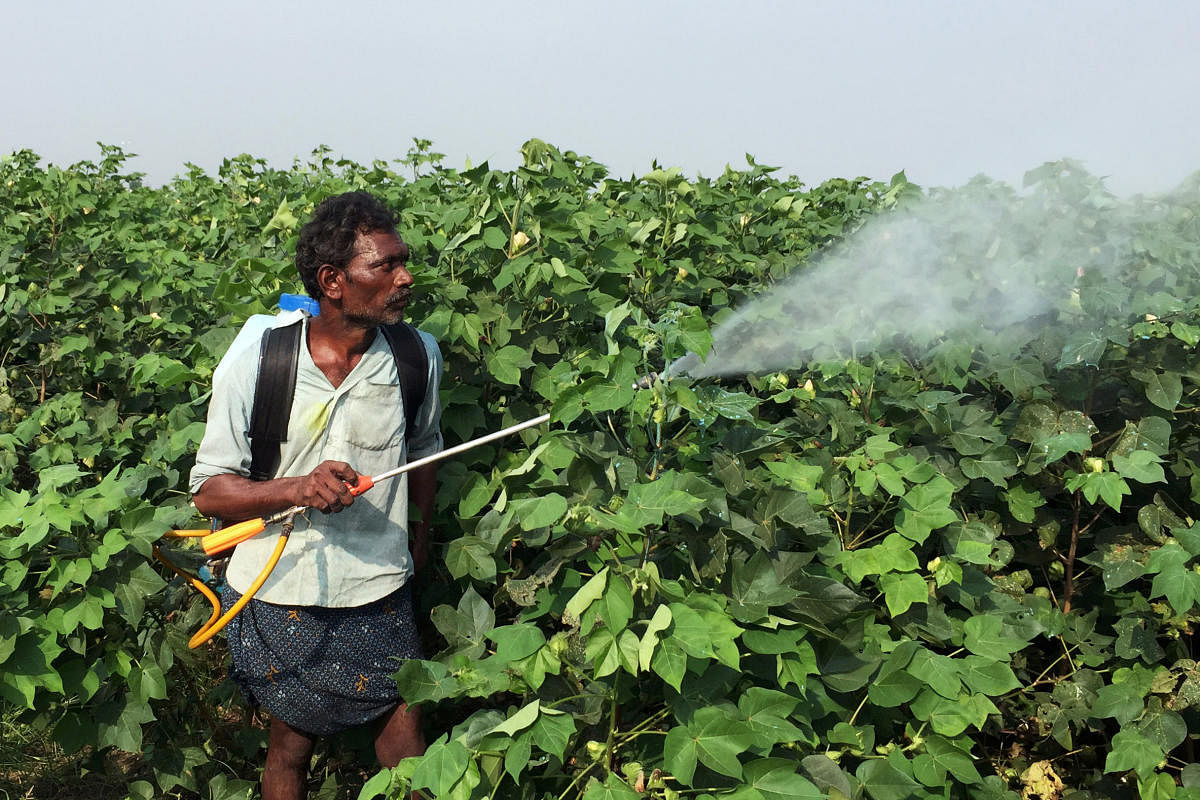
In his Independence Day speech, the prime minister has rightly flagged the issue of increased use of chemical fertilisers and called upon the farming community to reduce dependence by bringing down the use of chemicals; in other words, he has called for the adoption of zero budget farming. Lacing the issue with a heavy dose that combined environmentalism and nationalism, his appeal suggested that it would be a great service to the nation if the use of chemicals and fertilisers was reduced by 10-25 per cent and, if possible through a sustained campaign.
The problem
There is little doubt that there is excessive use of chemical inputs (pesticides and especially fertilisers) in the past three decades. World Bank data indicates that India’s consumption of fertiliser on per acre arable land has increased by nearly 65 per cent since 2002. However, the consumption has largely remained stagnant since 2012: It increased marginally from 255.36 lakh metric tonnes to 259.49 lakh metric tonnes in 2016-17, according to the Union Ministry of Chemicals & Fertilizers. There is a need for a large scale shift in the manner in which the farmers approach agriculture and overcome the perception that the use of more chemical fertilisers means an increase in yield. But any attempt to push for a reduction in the use of these chemical inputs must be preceded by an improvement and/or the creation of an effective agricultural extension network. This lack of an effective agricultural extension service network means that in most small towns the local fertiliser and pesticide dealer also plays the role of an ‘agricultural advisor’. Invariably, the profit margin of the dealer is the primary concern in any advice rendered, thereby compounding the existing problems.
Availability of cattle
Any decrease in the use of chemical inputs is directly dependent on the availability of alternatives, especially organic manures – something that is easier said than done. Any attempt to force a disruption in the availability of alternatives will only aggravate the present agricultural crisis. Rural areas are in the throes of a fundamental shift in the lifestyle. Unlike in the 1970s and 1980s, the shortage of cheap agricultural labour, generational shift, emphasis on education, migration to urban areas and changed consumption patterns means that maintaining milch cattle is seen as an additional burden – unless there is an abundance of family labour at the disposal of the household.
India’s Livestock Census reports indicate this practical reality – one which may make the prime minister’s call difficult to implement. Livestock Census statistics indicates that the total livestock population, excluding poultry, has grown less than 10 per cent since the 16th Census (1997) to the 19th Census (2012). Even this is largely due to the increase in sheep and goats. The total livestock numbers increased from 48.54 crores in 1997 to 51.20 crores in 2012. The total number of cattle, including buffaloes, has witnessed only a small increase over the years 1997 to 2012: From 28.88 crores in 1997 to 29.96 crores. This increase is skewed if we compare 2007 census to the 2012 census: It decreased from 30.4 crores to 29.96 crores with the number of cows declining while the number of buffaloes increasing. This is bound to decline further due to issues surrounding cow slaughter. Hence, any attempt to replace chemical fertiliser with an alternative will have to think in terms of finding sufficient supplies.
Soil Health Cards
The proclivity of our policymakers to announce disruptive policies at short notice and obstinately stick to unachievable goals means that the prime minister’s call may go beyond an innocuous request. Since 2015, the government has started rolling out a “soil health card”. The issued card displays the soil quality on 12 parameters and recommends nutrients to be used based on the soil tests conducted with the avowed purpose of optimising yields. These will be issued to as many farmers as possible. Till date, the government claims to have issued 10.70 crore cards after testing about 2.5 crore soil samples.
Interestingly, in Krishna district of Andhra Pradesh, which in 2017 claimed to be an early adapter of the Soil Health Card, farmers frequently complained that they no knowledge that government officials had collected the samples from their fields. Farmers point out that their present usage is nearly double the recommended levels. Any linking of fertiliser subsidy to recommendations of the Soil Health Cards may mean forcing farmers to change their chemical usage. One hopes this will not be implemented as a disruptive move because, in the context of declining total cattle ownership in rural areas, the supply of these organic nutrients will only add to the costs.
(S Ananth is an independent researcher based in Andhra Pradesh)
The views expressed above are the author’s own. They do not necessarily reflect the views of DH.